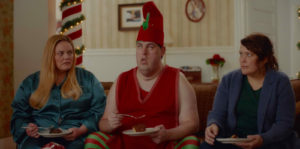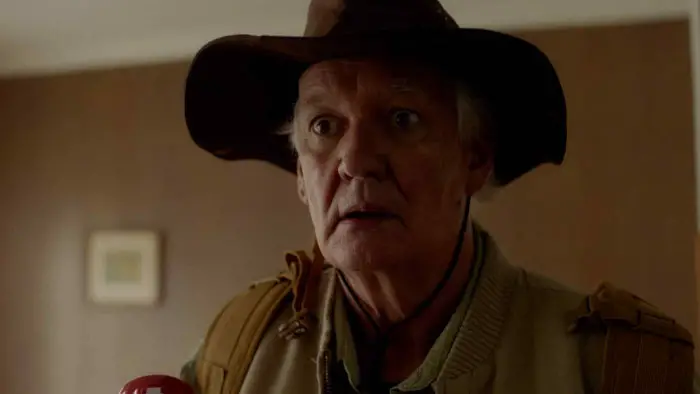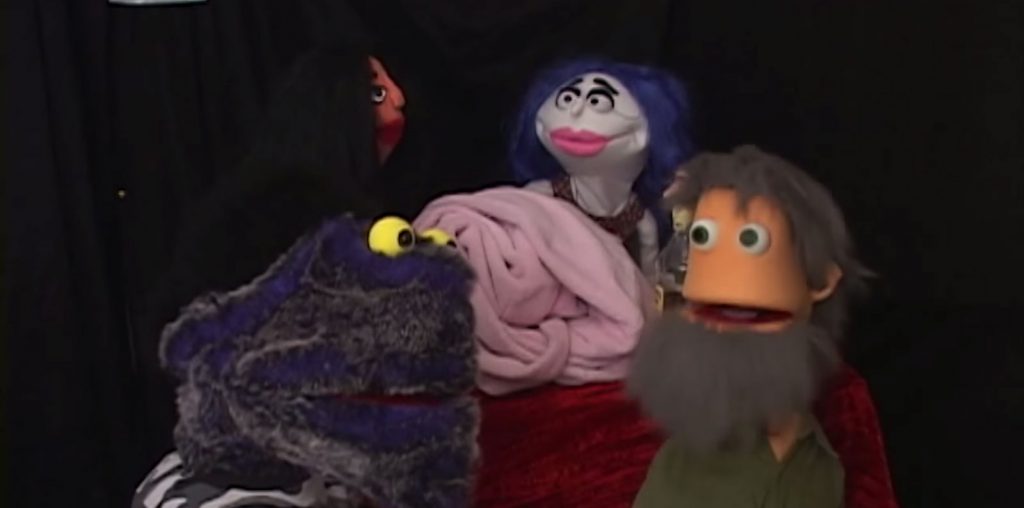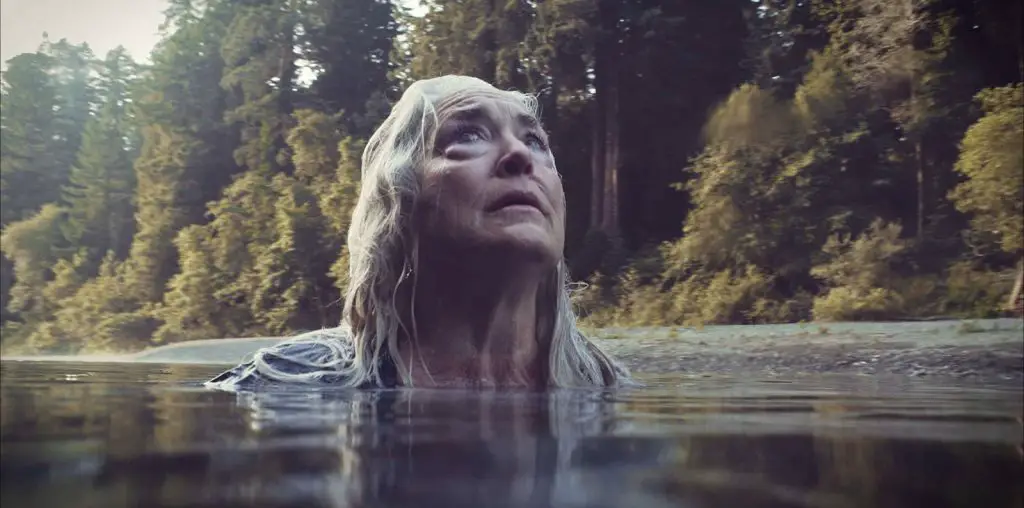
In life, whether it’s the holidays or not, you sometimes have to have a laugh to keep from crying. As a comedy that does tackle heavy-duty subjects, and houses an incredibly dark turn at the end — Arlen, could you talk about bringing those moments to the screen? And Kevin, what was it like making sure they existed on the page?
Arlen: Comedy and drama exist every day in our lives, and there’s no exception to that in Kevin’s script. It’s something that he and I have always been drawn to.
We like to use comedy as a way of emphasizing drama and then drama as a way to get bigger laughs in the comedy. There’s a scene in the film, which I won’t spoil, where most of our characters are gathered around in this really dramatic moment — and one of them in particular steps up to save the day, and it’s this touching-sincere moment.
Then, a second later, someone else interjects with a joke, and we get one of our biggest laughs. The reason that moment does so well is because it has a true tenderness, a true heart. Kevin and I found that throughout our careers, using those two sides of the same coin is more effective.
We get bigger laughs when we’re dramatic, and the drama plays harder when it’s sandwiched between comedy. As far as making it successful, it is a challenge tonally. I always knew it would be a challenge in that regard, but it was something we couldn’t lean into.
It’s something we both love. It’s real. We tried to make every scene as truthful as it can be with actors, and then on a smaller level, every moment.
Kevin: From the writing perspective, there are a lot of great comedic filmmakers out there that say, “To write a great comedy script, you’ve got to write a great drama and then add the jokes.”
I did that with How to Ruin the Holidays, and then people were like, “This is very dramatic.” And I thought, “Yeah, you told me to write a great drama a minute ago, so that’s what I did.” This is not a conventional comedy.

“…when I think about filmmaking, I think about cowboy hats versus French berets.”
You both had to wear a lot of hats while bringing this film to life. Kevin as writer-producer. Arlan, as a director, and then you also have this experience in cinematography. With those different hats, how were you able to compartmentalize and manage your responsibilities — in preproduction, production, and post-production?
Arlen: The thing is, this is an indie film. You do have to wear a lot of hats, no matter what you do. That always ends up being the case. It really helps when you have a great producer, and Kevin did a great job producing this.
He took away as many of those “hats” off my head as he could and let me truly focus on the directing. This then allows the actors to just focus on the acting and the rest of the crew to just focus on what they’re doing. You run into problems when the people who aren’t supposed to be doing a certain thing are forced to do them. It’s all about managing focus.
Tipping my hat, which is a lot of talking about hats here, to Kevin — he did a great job of shielding myself and others from the things that would have distracted me from getting what I needed on the day. We had to make sure we were surrounding ourselves with the people who could do the jobs the way they needed to do them.
You mentioned me working as a cinematographer, which I’ve done a lot of, and it was important for me to get a cinematographer who I trusted. That was Felipe Vara de Rey. I went to film school with him and have worked with him many times before, and I knew getting someone like him, for example, was going to make sure that I didn’t have to worry about certain aspects of the production.
Kevin: I’ve got a bunch of hat metaphors in my response. So, when I think about filmmaking, I think about cowboy hats versus French berets. Now, stay with me… No, I’m kidding.
What I wanted to say, having a high degree of trust between me and Arlen was an essential component of the pendulum swing of control. From my perspective, when I was writing the script, this is my baby.
And then once we started moving into preproduction, that’s the handoff. Arlan is coming in and saying, “Hey, I would love to see this or that.” And I’m going, “Okay, yeah, let’s do some rewrites.” At that point, both of our hands are on the baton, and then we get to production and I have to let go of the baton to let him do his thing. And like he said, it was my job to try to get as many obstacles out of his way.
Then, of course, once we get into post, that baton starts getting passed back. Now we’re going back, and I’m giving him feedback. Whereas in the previous iteration he was giving me feedback.
I’ve got the baton again, and I’m dealing with distributors and PR companies. There was a satisfying nature to that process. There were moments when one of us was in the lead and moments where we were tackling it together — and of course, for the whole thing, we’re all in it together, But it’s important to know who is in the driver’s seat from time to time.


